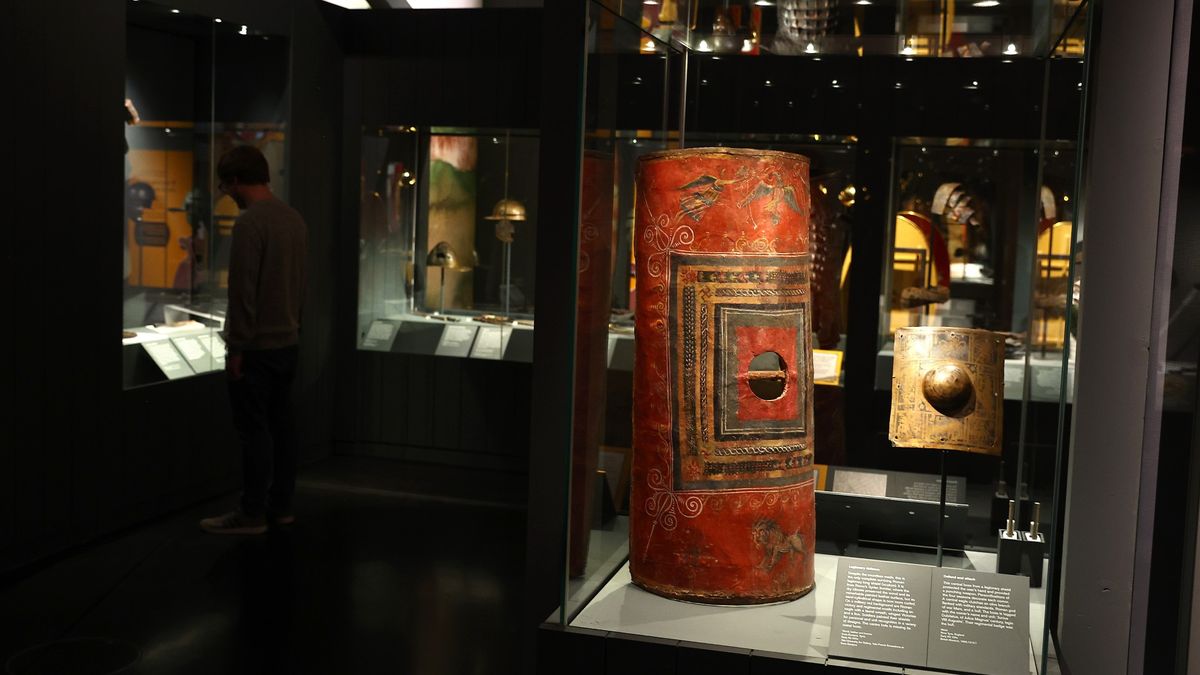At its zenith, the Roman empire boasted around 60 million inhabitants and governed territories stretching “from Mesopotamia all the way to Hadrian’s Wall,” as noted by Nick Clark in the [source].
Spread throughout this vast expanse was a military force of 300,000 soldiers, though modest compared to modern standards, it stood as one of the most substantial ancient standing armies. Their duties encompassed border defense, law enforcement, and quelling uprisings. The profession was perilous; once a soldier embarked on their 25-year tenure, “medical discharge, dishonor, retirement, or death” were the sole avenues of departure – with a mere “50% chance of surviving until retirement.”
A newly unveiled exhibition delves into how Rome established its expansive dominion “through military supremacy,” shedding light on the real experiences of “recruits thrust into the frontline of this formidable war apparatus.” Featuring an array of captivating artifacts such as attire, weaponry, and correspondences between soldiers and their kin, the exhibition spans centuries, recounting some “astonishing narratives.”
The narrative unfolds through the perspective of Claudius Terentianus, a soldier hailing from Egypt during the reign of Emperor Trajan, as recounted by Laura Freeman in [source]. Terentianus’s preserved papyrus letters discovered in Karanis, Egypt, offer fleeting glimpses into his life: following an unsuccessful bid to enlist in the legions, he joined the “lesser-paid” marines and likely journeyed eastward to combat the Parthians.
This compelling tale is vividly brought to life through an assortment of artifacts sourced from across the empire. A solitary red sock, accompanying a plea for sturdier footwear to his father, alongside a pair of felt socks. Additionally, a collection of nit combs – a necessity due to the pervasive lice issue within the ranks – and a meticulously crafted travel grooming kit complete with tweezers, ear scoops, and nail cleaners.
While not visually vibrant, the exhibition’s color scheme – a somber blend of rust, iron, weathered leather, and stone – may leave some yearning for a splash of vibrancy. Nevertheless, it stands as a robust and poignant display.
The somber aspects of military life are not disregarded, as highlighted by Alastair Sooke in [source]. The exhibition features “twisted human remains,” including the skeleton of an unfortunate individual crucified, and an ox’s skull riddled with perforations from Roman artillery bolts.
Despite the grim undertones, the exhibition interweaves narrative intricacies that offer a respite. It reveals the diverse origins of the troops, with certain ethnicities held in higher esteem than others. Notably, North African cavalrymen were highly prized, while recruits from regions like our rain-soaked province were less esteemed. Romans even dubbed the inhabitants as “Brittunculi,” or “wretched little Brits.” These indelible details render Legion one of the most impactful exhibitions at the British Museum in recent memory.
For further exploration, delve into more captivating content.
